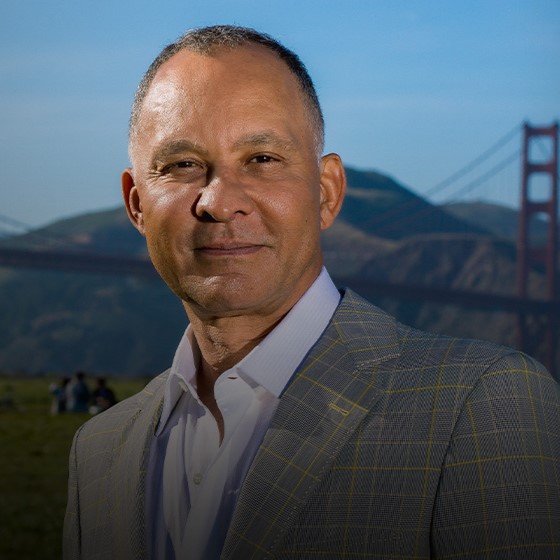Plastic Surgery for Gynecomastia Treatment Following Weight Loss with Post Semaglutide Wegovy: Wegovy Chest
13 Min Read:

Are you struggling with gynecomastia, a condition characterized by enlarged breast tissue, even after successfully managing your weight with semaglutide (Wegovy)? If so, plastic surgery for gynecomastia treatment following weight loss surgery achieved with post-semaglutide (Wegovy) may provide the comprehensive solution you’re looking for. In this article, we introduce the term “Wegovy Chest” and will explore how surgical intervention can effectively remove excess breast tissue and help sculpt a more masculine chest after weight loss. Body contouring is also an essential part of the comprehensive solution for gynecomastia treatment following weight loss. Discover the processes involved, the benefits it offers, and the transformative potential that male breast reduction surgery holds for individuals in similar situations.
Key Takeaways
- Gynecomastia, affecting 35% of men, is often caused by hormonal imbalances and can persist after substantial weight loss, such as semaglutide (Wegovy), a medication which reduces appetite and body weight, but may not affect the glandular breast tissue characteristic of the condition.
- Male breast reduction surgery, tailored to the individual patient, can address the persistent glandular tissue and excess skin after significant weight loss. Gynecomastia can develop in one or both breasts, and various surgical techniques, such as liposuction and tissue excision, are available, aimed at achieving a masculine chest contour and improving aesthetics. These techniques are part of body contouring procedures designed to enhance the appearance of the chest.
- Post-surgical care and preparation are crucial for a smooth recovery and successful outcome in gynecomastia treatment. Discontinuing semaglutide before surgery and following a specified recovery protocol, including wearing a compression garment and avoiding strenuous activity, helps to manage postoperative effects and ensure optimal healing.
Understanding Gynecomastia and Semaglutide Weight Loss
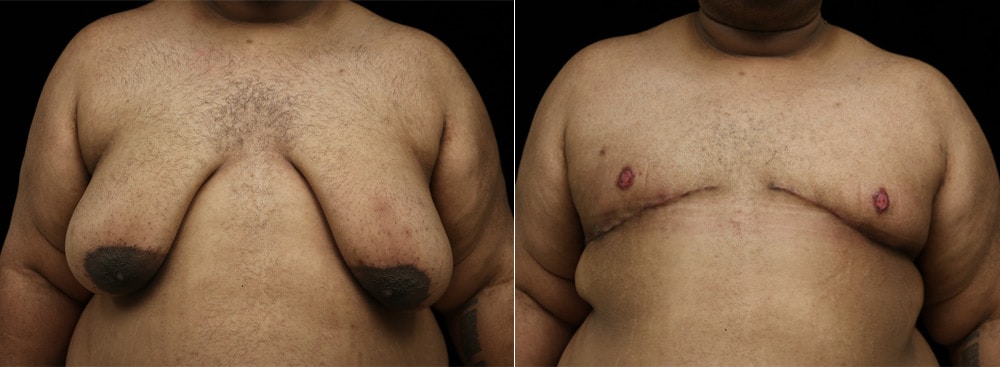
Gynecomastia impacts 35% of the male population, causing an increase in breast size, which can lead to emotional discomfort and self-consciousness. This enlargement of male breasts, known as breast growth, is often due to hormonal shifts where estrogen levels surpass testosterone, triggering the growth of breast tissue commonly seen in females. While some men may develop gynecomastia during natural periods like puberty or later life.
Obesity will contribute significantly to the size of the chest and contribute to the size of one’s enlarged breasts or breast swelling. In many cases, obese men suffer from pseudogynecomastia which is an enlarged breast due to fat accumulation which is occurring throughout the body contour. In cases where hormonal imbalance is identified as the cause, hormone therapy may be considered a potential treatment to restore balance and alleviate symptoms.
When obese men lose significant weight on semaglutide (Wegovy), causing “Wegovy chest” this creates a grade 4 gynecomastia which requires excess skin excision. This is treated by a double incision mastectomy with a free-nipple graft.
Key factors contributing to gynecomastia include:
- Hormonal imbalance
- The maturation process during adolescence
- The aging process
- Excessive weight gain
- Prescribed drugs for unrelated health issues
- Underlying illnesses affecting organs like liver or kidneys
Although rare, men with gynecomastia may have an increased risk of breast cancer. Signs suggesting breast cancer include swollen and tender breasts, and it is advisable to contact a healthcare provider if there are any concerns related to breast growth in males.
It’s imperative for anyone exhibiting signs indicative of gynecomastia to seek professional healthcare advice, ensuring they receive accurate diagnostic evaluations along with suitable treatment recommendations.
Semaglutide Explained

Wegovy, a revolutionary weight loss medication, harbors the active ingredient semaglutide, which shares its roots with the diabetes drug Ozempic. Its mechanism of action is unique; semaglutide mimics a hormone that acts on the brain’s appetite-regulating centers, curbing hunger and consequently, calorie intake as an appetite suppressant. This hormone-based approach to weight management marks a significant departure from traditional methods, offering a new frontier for those struggling with obesity.
While Wegovy and Ozempic both contain semaglutide, their FDA-approved purposes differ. Wegovy is sanctioned for weight loss, while Ozempic is not. The nuances in dosage and individual patient factors contribute to the variations in their effectiveness, but the core goal remains the same – to aid individuals in their weight management journey.
For those embarking on a weight loss regimen, particularly those with gynecomastia, it is essential to comprehend the science behind Wegovy. Knowing how the medication works as an appetite suppressant to reduce appetite and body weight can help patients set realistic expectations and prepare for potential changes in their body composition, including decreased breast size due to fat loss.
The Impact on Male Breast Tissue
The effects of Semaglutide extend well beyond simple weight loss. It notably reduces body weight, Body Mass Index (BMI), and waist size, which could contribute to the reduction in male breast enlargement for those with gynecomastia affecting one or both breasts. While this decrease in body fat may lead to a smaller breast size, it is important to note that the specific glandular tissue associated with gynecomastia remains unaffected. This continuous growth of male-specific glandular tissue highlights why specialized treatment for gynecomastia is necessary.
There are dual implications for losing weight’s impact on male breasts. Although decreasing body fat can somewhat lessen the extent of enlarged breasts, it doesn’t tackle the glandular characteristics inherent in gynecomastia. For men who have lost weight using semaglutide, but still exhibit signs of enlarged mammary glands, surgical intervention could be essential for achieving their desired chest contour.
Understanding that shedding pounds through semaglutide use might not completely eliminate problems related to an increase in male breast size allows individuals affected by this condition to consider more thorough interventions. By addressing both excess fatty tissues and glandular issues within the chest area, surgery tailored towards treating gynecomastia opens up avenues toward significant cosmetic enhancement and helps create a sculpted masculine upper-body appearance.
Addressing Post-Weight Loss Skin Concerns in Gynecomastia
Men who have triumphed over weight loss can still face challenges with excess, sagging skin in the chest region due to gynecomastia. Skin elasticity, how much breast enlargement there was before losing weight, and any previous droopiness all influence the amount of loose skin that remains. To tackle this issue and reclaim a youthful contour for their chest, plastic surgery becomes an essential tool.
To combat breasts that sag and extra skin post-weight loss breakthroughs, many turn to body-contouring procedures designed specifically for these issues. These surgeries go beyond aesthetic enhancement. They serve as reconstructive solutions to both the physical manifestation of gynecomastia and its emotional impact—allowing men to feel confident, showcasing their chests again without being self-conscious about dangling skin.
Embracing plastic surgery as a means of resolving lingering effects on the skin following weight reduction is often a crucial part of men’s transformative journey towards better health. Male breast reduction not only elevates one’s appearance, but also brings psychological benefits by strengthening positive self-image and relationship with one’s own body after achieving such important personal goals.
Male Body Contouring post Semaglutide Wegovy | Ozempic
Men undergoing massive weight loss post semaglutide treatment show skin laxity to the entire body. Some of the most common cosmetic surgery procedures performed are:
- Facelift for “Ozemepic face” – loss of facial volume in the face due to fat loss, which leads to loose or redundant skin, causing jowls, “turkey neck”, severe wrinkles and creases, and hollow cheeks. This gives a man the appearance of looking old and sickly.
- Tummy tuck (abdominoplasty) – men lose both visceral fat in the abdomen and subcutaneous fat underneath the skin. This can significantly tighten the skin and abdominal wall. In addition, the pubic area, “FUPA in women”, or “PUPA in men” often loses its integrity with severe laxity and can be corrected with a pubic lift.
- Posterior Body Lift – severe weight will cause folds of skin to gather in the waist and lower buttock area. The incision connects to the tummy tuck incision and lifts the butt skin, even the lateral thigh.
- Gynecomastia surgery – removes male breast tissue growth from one breast or both, removes breast fat with liposuction, and removes skin with a mastectomy incision.
- Arm lift – for excess skin to tighten the bicep area. This sometimes connects to the breast incision via the armpit to tighten the entire region.
Options for Male Breast Reduction
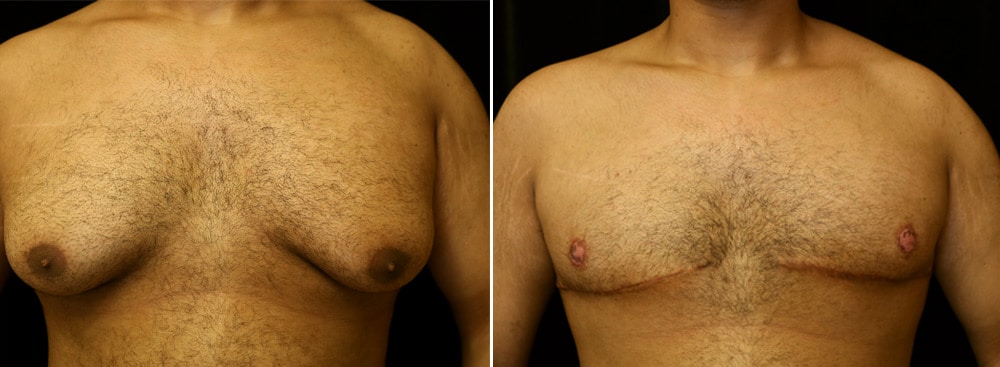
Gynecomastia surgery, which is designed to reduce male breast tissue, is a customized procedure tailored to the individual needs of each patient with gynecomastia. Depending on how much excess skin there is and the degree of male breast enlargement, surgical methods might include liposuction combination with direct breast tissue excision. For individuals who have undergone substantial weight loss leading to loose skin, incorporating skin removal into the surgery is essential for achieving a more defined chest contour.
Making the choice to proceed with gynecomastia treatment involves weighing various surgical options that cater specifically to an individual’s condition.
- Liposuction: A technique suitable for eliminating surplus fat.
- Direct Excision: Required for extracting glandular tissue typically present in gynecomastia cases.
- Skin Removal: Vital when significant sagging occurs after major weight reduction. It eliminates excess skin and helps refine chest shape.
By understanding these distinct surgical interventions available for male breast reduction, men can make well-informed decisions regarding their care approach. Consulting a proficient plastic surgeon allows patients to identify an optimal route toward reducing their breasts effectively—both aesthetically and functionally—and achieving alignment between their physical appearance and personal goals.
Dr. Miguel Delgado’s Expertise in Gynecomastia Surgery
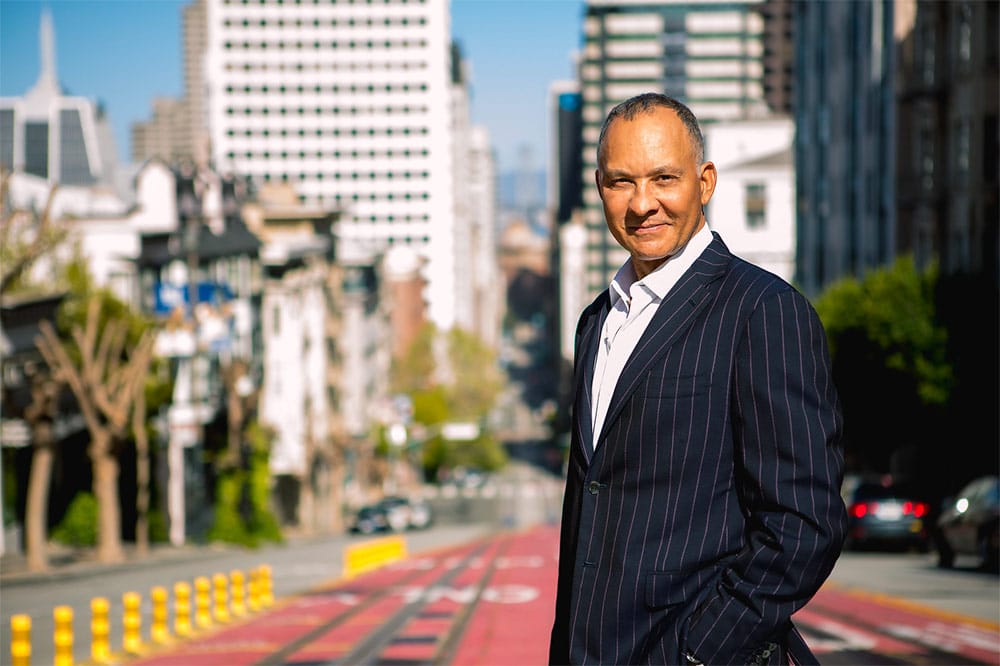
Dr. Miguel Delgado is an authority in the field of gynecomastia surgery, with board certification from the American Board of Plastic and membership in the American Society of Plastic Surgery. With over thirty years dedicated to mastering male breast reduction, Dr. Delgado has successfully completed more than 5,000 gynecomastia surgeries, positioning him as a leading plastic surgeon in the San Francisco Bay Area.
His role enhances his credentials as Medical Director for one of the longest-standing online forums devoted to gynecomastia. He actively participates in this community and is deeply committed to educating and supporting patients through their surgical journey—efforts that have earned him recognition as San Francisco’s premier plastic surgeon.
These honors attest to Dr. Delgado’s reputation
Marin Cosmetic Surgery Center: A Closer Look
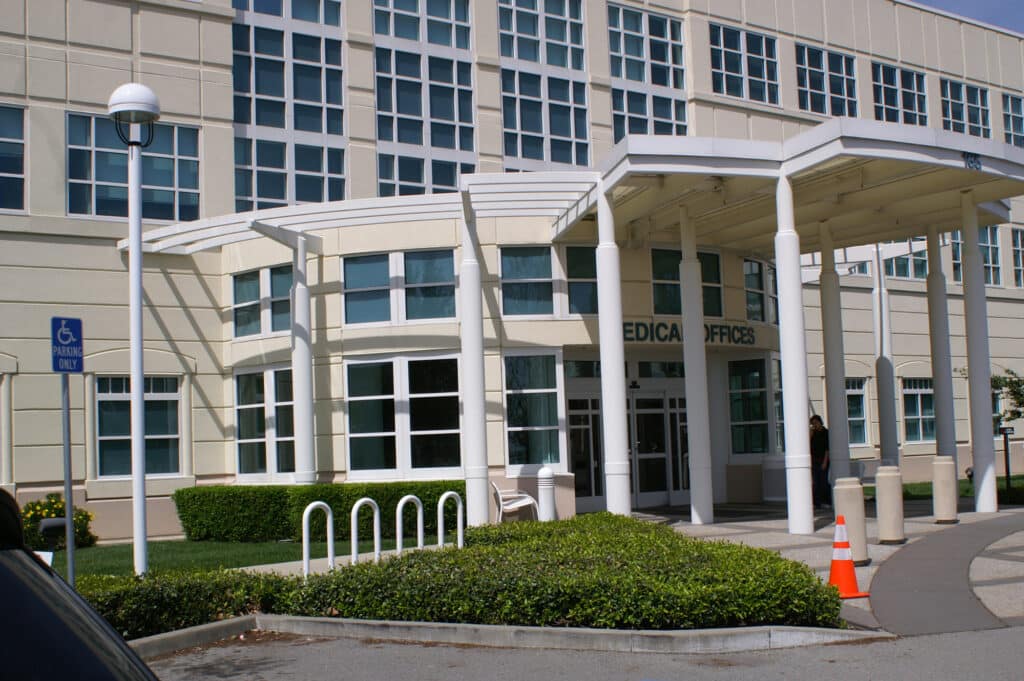
At The Marin Cosmetic Surgery Center, under the esteemed direction of Dr. Miguel Delgado, men afflicted with gynecomastia find a beacon of hope for their condition. Nestled amid the picturesque setting of Novato, in Marin County, CA, and in close proximity to the iconic Golden Gate Bridge, this facility stands out for:
Preparing for Gynecomastia Surgery Post-Semaglutide Treatment
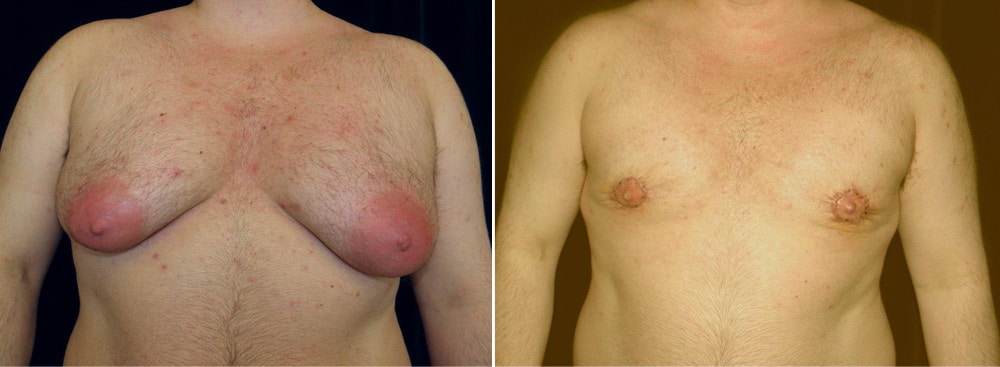
Starting treatment for gynecomastia with surgery, after attaining weight loss success through semaglutide, calls for methodical planning. Preoperative care is crucial in this preparation phase. Patients are recommended to cease the administration of GLP-1 agonists, such as semaglutide, a fortnight before the procedure, to reduce potential complications stemming from impaired gastric emptying. This preventive measure is essential to ensure an uneventful and secure surgical process.
For individuals managing diabetes:
- Engaging with an endocrinologist is imperative to maintain proper glycemic control while halting semaglutide therapy.
- Should patients display any gastrointestinal symptoms on the day earmarked for surgery, it may be necessary to defer elective surgeries as a safety measure against aspiration risks.
- In absence of gastrointestinal issues, it’s important that ‘full stomach precautions’ are observed.
- An ultrasound examination might be warranted if there was insufficient compliance with guidelines regarding discontinuation of semaglutide usage.
Navigating towards gynecomastia surgery requires collaboration between the patient, their plastic surgeons, and additional medical personnel involved in care delivery. It’s pivotal that everyone comprehends specific measures tied to those who have integrated semaglutide into their regimen prior to weight reduction efforts. Compliance with preparatory instructions paves the way toward entering surgical procedures smoothly, and ensures prompt post-surgery recovery periods.
The Surgery Procedure
Enhancing Self-Esteem with Male Breast Reduction after semaglutide Weovy treatment.

Opting for gynecomastia surgery after weight loss to reduce the male breast is often a choice rooted in boosting self-esteem and enhancing body image. Men who undertake this surgical procedure to rectify gynecomastia typically experience an impactful shift in how they view themselves, as it alleviates feelings of embarrassment, self shame and increases confidence. This improved sense of self extends beyond just looks—it enriches their well-being and changes the way they interact within social settings.
Undergoing treatment for gynecomastia provides significant improvements to men’s perception of their bodies, giving them the freedom to wear varied clothing styles comfortably and engage actively in sports without feeling inhibited by discomfort or self-consciousness. The effects on mental health from male breast reduction are immense. It paves the way for heightened liberation across multiple spheres of life, influencing both personal relationships and career pursuits profoundly.
Experiencing the freeing outcomes that come with correctional surgery for gynecomastia encompasses:
- Lifting burdens that have restricted one’s ability to realize full potential
- Attaining relief, which allows involvement in activities such as swimming or intimacy, with greater comfort, devoid of past insecurities
- Undergoing a change that transcends physical alterations—touching emotional and psychological dimensions
- Gaining empowerment over one’s physique, leading toward fuller engagement with life experiences
Summary
The treatment of gynecomastia, especially after semaglutide-induced weight loss, constitutes a complex yet deeply rewarding journey that marries clinical expertise with transformative healing. Grasping the hormonal complexities leading to male breast enlargement lays the groundwork for this process. Renowned surgeons like Dr. Miguel Delgado apply advanced surgical techniques critical in achieving both physical and mental rejuvenation. The ultimate result is more than merely an altered chest. It’s a restoration of self-confidence and invigoration for life itself. This convergence of plastic surgery’s artistry with holistic wellness exemplifies modern medicine’s capacity to elevate not just outward appearance, but the core of one’s being.
Frequently Asked Questions
Can you get gynecomastia surgery after weight loss?
Certainly, it is possible to undergo gynecomastia surgery following weight loss. For optimal outcomes and to reduce the likelihood of complications like sagging skin and nipples that droop, attaining your target weight prior to the surgery is advisable.
What causes gynecomastia, and how is it related to hormone levels in men?
An imbalance in estrogen and testosterone levels can lead to the formation of breast tissue within the male breast, a condition known as gynecomastia. This development may stem from natural hormone changes, specific health conditions, or the consumption of particular medications that affect these hormones.
Can weight loss from semaglutide treatment eliminate gynecomastia?
Surgery is frequently required to completely resolve the condition of gynecomastia, as weight loss from semaglutide treatment cannot eradicate the glandular tissue that defines this condition.
What are the surgical options for male breast reduction?
Surgical procedures for reducing the male breast can involve liposuction, removal of glandular tissue directly, or both methods together. In certain instances, excising skin may be required as part of male breast reduction.
How long is the recovery period after gynecomastia surgery?
Following gynecomastia surgery, the duration of recovery differs. Most patients can resume their work duties within a week. It is advisable to refrain from rigorous activities during the initial two to three weeks post-surgery, and progressively resume exercise routines as per the guidance provided by the operating surgeon.

